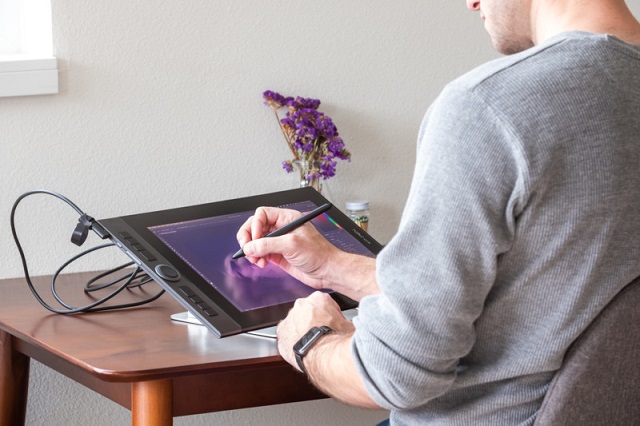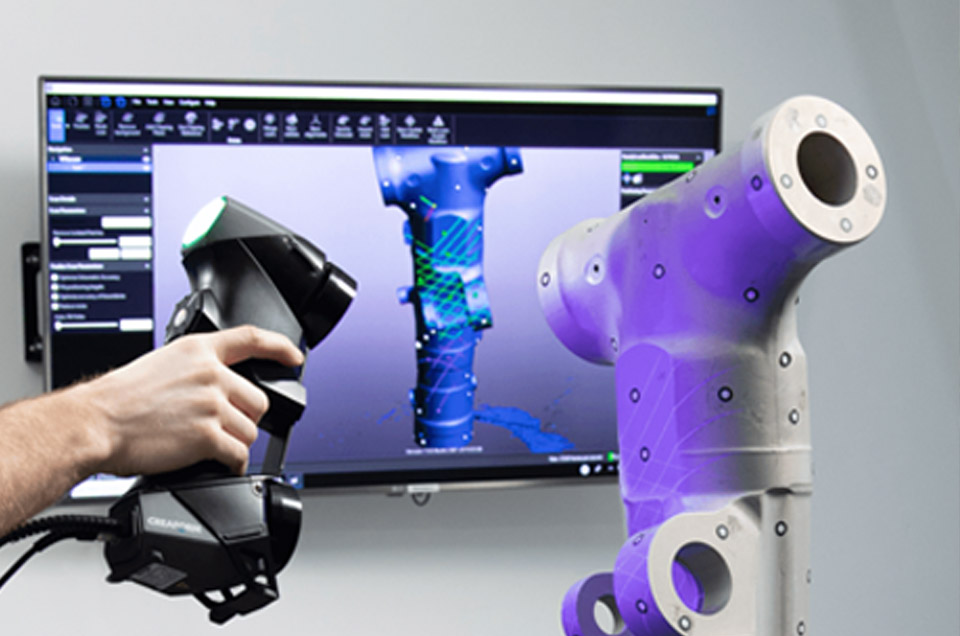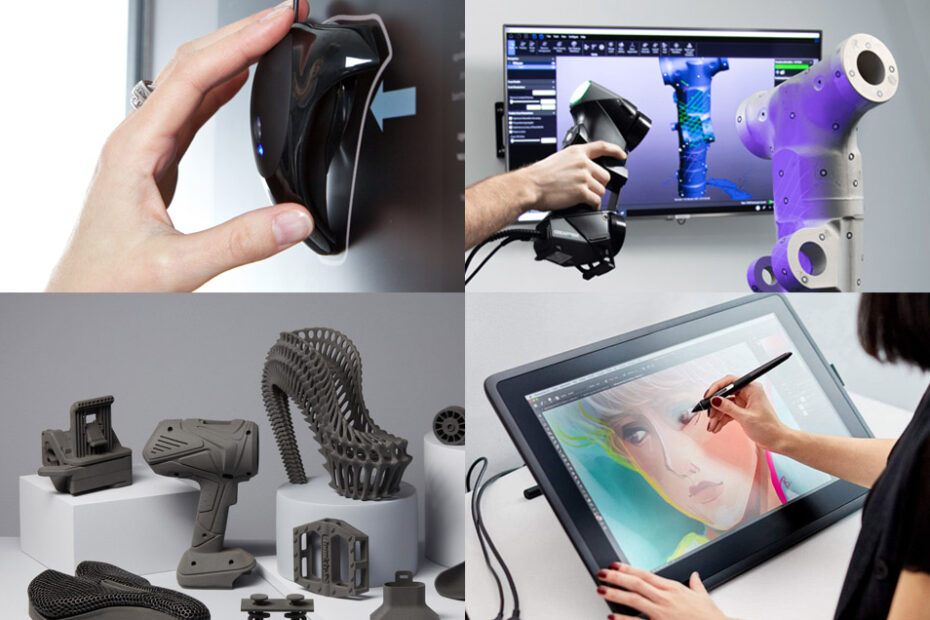When we talk about design as a profession there are design hardware that we need and they have really high costs. In this article we are going to see the 5 most expensive tools we can invest in.
Because graphic design is art. But it is also a science. And it’s a very nice profession. Although quite expensive.
1. Graphic tablets
Graphics tablets, also known as drawing tablets, are input devices that allow artists and designers to draw or write on the computer in a similar way as they would with a pencil and paper.
A graphics tablet consists of a flat surface on which you draw with a special pen or stylus. The tablet detects the position, pressure and often the tilt of the stylus, and transmits this data to the computer. This allows a variety of strokes and drawing techniques to be translated into lines and marks in design or illustration software.

Don't miss our ultimate guide on graphic design!
Discover the best online courses, master's degrees, and university programs for a successful career in design with our "Ultimate Guide to Studying Graphic Design: The Best Options for a Successful Career". Shape your future in the creative industry today.View Post Read Later
Design Uses
Graphics tablets are especially useful in graphic design, animation, illustration and photo editing. They allow precise control and offer a more natural drawing experience compared to using a mouse.
Types of graphics tablets
There are basic graphics tablets that offer a surface for drawing, and there are more advanced models with built-in screens that allow you to draw directly on a visual representation of the artwork. The latter, known as screen tablets, offer an even more immersive experience.
Pricing
- Entry: There are graphics tablets starting at just $50 or $60 USD, suitable for hobbyists or students.
- Mid: Mid-range tablets are priced similarly to smartphones, you can find them in a very wide range from a few hundred dollars to $1,000.
- Professional: Professional graphics tablets already have superior functionalities and features, but the price is much higher and you can find them starting at $2000.
2. Color calibration devices
Color calibration devices are designer hardware used to ensure that colors are displayed consistently and accurately on different display devices, such as monitors, projectors and printing devices. They are essential for maintaining color integrity throughout the design and printing process.
These devices work by measuring and comparing the colors displayed on the screen to a known standard and adjusting the output to match that standard. The process can include measuring specific colors displayed on the screen and then creating a color profile that the monitor will use to display the colors correctly.

Design Uses
In the design world, color calibration is vital to ensure that the colors selected at the design stage are faithfully reproduced in print or other media. This is especially critical in branding, product design, and any field where color accuracy is essential.
Types of calibrators
There are several types of color calibration devices, including:
- Colorimeters: These devices measure screen color and help adjust settings for accurate reproduction.
- Spectrophotometers: These are more accurate and are used to measure light and color on a wider range, including monitors and printed materials.
Prices for color calibration design hardware
Prices for these devices can vary widely:
- Entry: You can find basic colorimeters for as little as $100-$200 USD, suitable for amateurs and semi-professionals.
- Professional: Professional-level spectrophotometers and calibration devices can cost from $500 to several thousand dollars, depending on accuracy and features. They are available in the 5-figure range.
3. Prototyping Machinery
Prototyping machinery is a set of tools and technologies that enable designers and manufacturers to create rapid physical prototypes of products or components. These prototypes can be functional or simply representative, and aid in the process of developing, testing and refining a design.
Types of Machinery
- 3D printers: These allow the additive manufacturing of objects in three dimensions from a digital design. They can use various materials such as plastics, resins and metals.
- Laser Cutters: These machines use a powerful laser to cut or engrave materials such as wood, acrylic and metal.
- CNC Milling Machines: These are computer-controlled machines that can carve, cut and shape materials such as wood, metal and plastic.
- Injection Molding Machines: Used to mass produce plastic parts, they are ideal for testing how a design will perform in large-scale production.
Design Uses
- Rapid Prototyping: Create rapid physical models for proof-of-concept testing.
- Function Testing: Evaluate how a design works in real life.
- Product Development: Refine and fine-tune the design prior to mass production.
- Customer Presentations: Showing a physical prototype instead of a digital design can be more impactful.
Pricing
Prices can vary greatly:
- 3D Printers: from a few hundred to tens of thousands of dollars, depending on capabilities and materials.
- Laser Cutters and CNC Milling Machines: Can range from $1,000 to more than $20,000 USD Change to Euro
- Injection Molding Machines: These are generally more expensive and can cost tens or even hundreds of thousands of dollars.
4. Professional Scanners
Professional scanners are devices designed to convert images, documents, or even three-dimensional objects into a digital format. They offer higher resolution, color depth, and capabilities than standard scanners, making them essential for professional applications.

Design hardware for 3D scanning
Types of Professional Scanners
- Document Scanners: Designed to digitize large volumes of documents with high resolution and speed.
- Flatbed Art Scanners: Perfect for fine art, offering high resolution and accurate color reproduction.
- Film and Slide Scanners: For digitizing negatives and slides, with the ability to capture fine details.
- 3D Scanners: Used to capture three-dimensional objects and create digital models.
Design Uses
- Preservation and Reproduction: Ideal for digitizing works of art or historical documents with high fidelity.
- Editing and Post-production: Facilitates image and document editing in design software.
- 3D Modeling: 3D scanners are useful in product design, architecture, and visual effects.
Pricing
Prices of professional scanners can vary widely:
- Documents and Flat Art: From a few hundred to several thousand dollars, depending on resolution and capabilities.
- Film and Slides: Often in the $1,000 – $5,000 range.
- 3D Scanners: Can range from a few thousand to tens of thousands of dollars, depending on accuracy and functionality.
5. Photography equipment
Photography equipment is all the tools and devices used in the capture and processing of photographic images. This includes cameras, lenses, lighting, tripods and more.
Main Components
- Cameras: From DSLRs and mirrorless cameras to film and medium format cameras, there is a wide variety for different needs and budgets.
- Lenses: Lenses or lenses come in various focal lengths and apertures, allowing the photographer to control framing and depth of field.
- Lighting: This includes flashes, continuous lights, reflectors and diffusers. Lighting can make a big difference in the quality and style of the photo.
- Tripods and Stands: To keep the camera steady and allow for accurate shots, especially in low light situations.
- Accessories: This can include filters, batteries, memory cards, bags and more.
Graphic Design Uses
In the design field, photography equipment has a variety of uses that span several industries.
Product photography is essential for capturing product images for catalogs, advertising and e-commerce. Fashion photography plays a key role in the fashion industry, where it is used to portray clothing, accessories and models. Portrait photography focuses on creating images for personal or corporate branding, capturing the essence of an individual or brand. Finally, architectural photography is vital for capturing buildings and interior spaces, being an important tool in interior design and architecture.
Photography design hardware prices
Prices can vary greatly depending on the quality, equipment and needs of each designer:
- Cameras: From a few hundred to tens of thousands of dollars.
- Lenses: Can range from $100 to several thousand dollars.
- Lighting and Accessories: Can be as inexpensive as $50 or as expensive as several thousand, depending on quality and brand.
My take on design hardware
After many years in graphic and creative design professionally I have had the opportunity to work with a lot of very high value design hardware. But I have to be completely honest with you: 99% of design projects require virtually none of it.
So, if it’s a real need for your work, go ahead, it’s a worthwhile investment. But if you are starting out or your projects are for small or medium companies, this kind of design hardware will be left aside and you won’t be able to get enough out of it before it becomes obsolete.
what design hardware do you use? I’ll read you in the comments 😉


